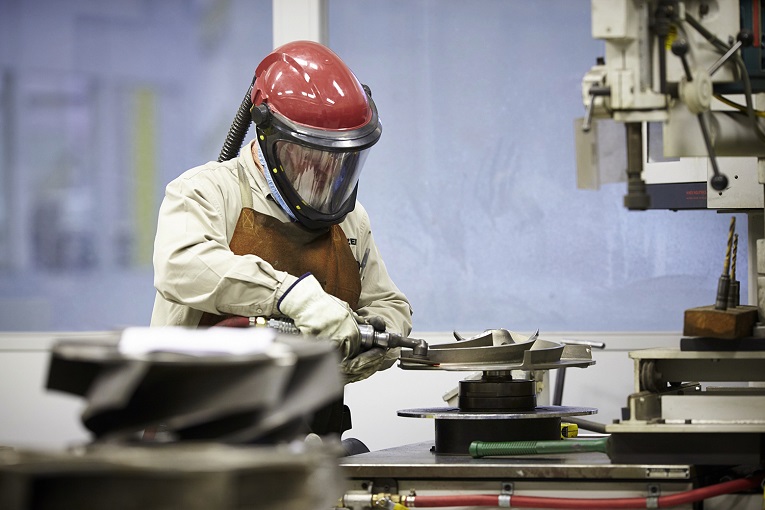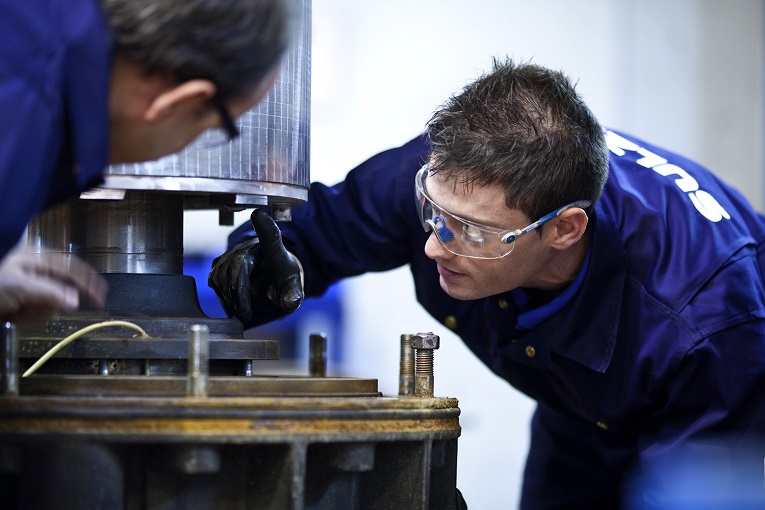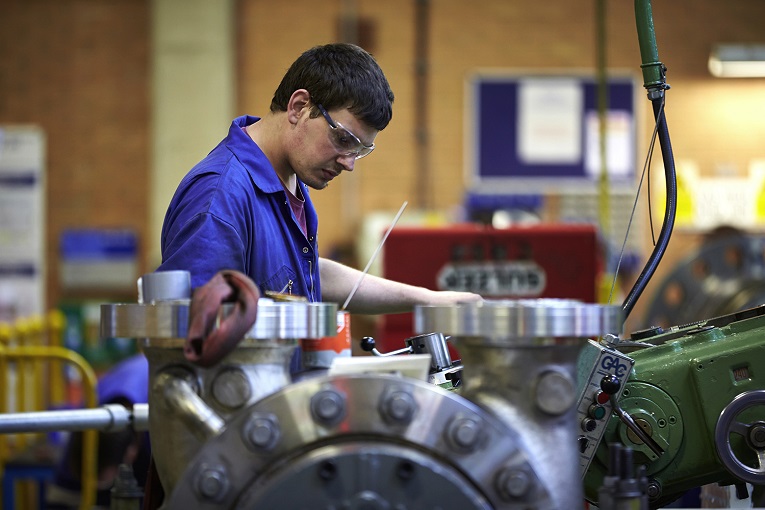


High energy pumps and expanders in the hydrocarbon industry face challenges in operating conditions, corrosive media and rising operating costs. Advances in manufacturing, repair and monitoring technology help to mitigate these concerns and prolong service life.
Every day we all use products from the hydrocarbon industry, whether it is fuel for travel, gas to cook dinner or the plastics used to make casings for electronics. The industry is closely linked to our lives and so any improvements that reduce operating costs will ultimately benefit everyone.
High energy pumps and expanders play a vital role in the hydrocarbon sector and each has its own challenges. Efficiency is essential for both to ensure the optimum use of energy, which is one of the biggest operating costs in the industry. With continuous operation, detrimental processes such as erosion and corrosion, take a significant toll on the vane tolerances, seals and impeller clearances. Without timely intervention, these can lead to considerable losses.
Extended service Typically, large pumps are designed for an extended service life. However, when the performance does begin to deteriorate, it is often a sign that the volute or the impeller has become worn or corroded. It may be that, in many cases, the pump has provided decades of reliable service but finding new parts can be a challenge, which, even if successful, can mean a long lead time before delivery. Fortunately, the latest in design technology and manufacturing processes can significantly reduce the time and the cost involved in creating replacement parts.
In situations where original equipment manufacturers (OEMs) can create parts for legacy machines, this service may have a delay as a special build could be necessary. The OEM advantage here is the availability of original drawings for the parts. However, reassigning production equipment to a one-off project can incur additional costs as well as a delay in delivery, unless an alternative process is available.
Fortunately, modern technology offers a solution that can be implemented by OEMs, repairers, and specialist parts suppliers. The advent of reverse engineering using sophisticated coordinate measuring machines, 3D solid modelling software and laser scanning makes it possible to recreate complex parts on short lead times.
Upgrades Advances in design technology have been matched by similar developments in materials’ science that together enable original designs to be upgraded. Older pumps manufactured using materials such as bronze and cast iron, which cannot be welded, can have their service lives extended using stainless steel or other advanced alloys. In many cases, the original operating conditions for which the pump was designed will have evolved since the pump was first commissioned. Such changes can lead to a reduction in both performance and efficiency, but these can be addressed during a major repair or overhaul.
When creating a new impeller, the hydraulic design can be re-optimised to the operating conditions. Often this will reduce energy requirements and lead to significant reductions in operational costs. Using the latest design software and computational fluid dynamics (CFD), reverse engineered components can be fine-tuned to deliver optimal hydraulic performance.
The time required to create new components for high value assets such as high energy pumps and expanders has been significantly reduced recently with the advent of hybrid manufacturing equipment. Processes such as laser metal deposition and 5-axis milling can be carried out on a single machine, allowing for rapid production.
For example, an impeller can be created from a forged core that is machined using 5-axis methods to establish the basic shape. Then, a laser melts a stream of powder and deposits a layer of new metal onto the surface. This allows a large volume of material to be built up quickly. The hard surface can then be machined to the final dimensions, all on the same machine.
The flexibility of this manufacturing method also offers the potential to create components using different materials, allowing specific alloys to be used in different areas of the design. This is an extension of existing technologies such as specialist coatings and hard facings where optimised material properties can be incorporated into the design during the manufacturing process, rather than as an additional process.
Enhancing design In situations where a revised pump asset is required, operators can take advantage of the latest design and manufacturing technology to deliver a pump that is optimised for the application. Energy consumption, which is a key component in operational costs, can be reduced by focusing on pump efficiency and minimising all possible losses in the system.
By gaining a complete understanding of the application, fluid characteristics and flow demands, the most appropriate pump technology to deliver premium efficiency can be selected. Matching the pump construction with the optimum impeller design will result in the most cost-effective solution, both in terms of initial capital investment and long-term operating costs.
Further gains can be achieved through correct sizing of the pump to avoid energy wastage. This may appear an obvious statement but oversizing often occurs because multiple safety factors are added to the required head and flow values. As a result, the oversized pump does not run within its optimum efficiency curve during normal production.
Data use Having achieved the best possible design for an application, it is important to maintain the best performance and ensure that maintenance is undertaken at the most opportune time. Today, advanced analytics can be used to capture and process existing pump data to deliver considerable savings in both operating and maintenance costs.
By highlighting underperforming assets, it is possible to implement a proactive maintenance strategy and justify investment recommendations while carefully timing these to minimise lost production. Using data on performance, reliability and efficiency enables operators to determine the ability of the system to meet key performance indicators (KPIs).
Increased pump availability can have a significant effect on revenue by ensuring productivity is better maintained. Further benefits can be achieved through reduced maintenance spending by employing resources when they are needed rather than on a pre-set schedule.
A digital system created by Sulzer, called BLUE BOX makes use of data for pressure, flow, density, viscosity and power consumption. Together with information for the maintenance department including vibration and asset temperature readings, analytical tools generate visualisations in near real-time for stakeholders in the management and maintenance of the system.
The data is extracted directly from a variety of sources such as supervisory control and data acquisition (SCADA), programmable logic controllers (PLCs), process historians, databases, sensors and instrumentation. At this point, an industrial-grade computer can be installed to process the data. Known as an edge device, it is equipped with firewalls that provide a secure connection to the internet.
Customer data is processed in a Cloud server using a secure file transfer protocol (SFTP). Using proven algorithms, the data is analysed against known performance curves and displayed in a custom interface that offers the operator the greatest benefit. This Cloud-based solution simplifies regulatory compliance with a minimal IT footprint and is designed to be easily scalable to suit a wide range of operations.
Expanders In common with high-energy pumps, expanders are high-value assets that are relied upon for continuous, efficient operation. Any downtime has significant operational consequences, so it needs to be kept to an absolute minimum. Therefore, improving efficiency and reliability as well as reducing unscheduled repairs are important goals for the maintenance team.
Every expander contains a rotor which operates at high rotational speeds and pressures, it may also be required to endure high temperatures and corrosive media. To keep such an important asset operational and reliable, the use of performance data from predictive maintenance instrumentation can make a decisive difference in availability and the total cost of ownership (TCO) over its lifetime.
During planned shut-down periods, detailed inspection reports can highlight improvements to an expander that will improve life cycle costs (LCC), process efficiency and productivity. Depending on the findings, several of the latest maintenance and repair techniques can be used to address specific issues.
Legacy equipment Modern coating technology can now be applied to legacy equipment that was not designed to take account of, for example, particulate-laden gas streams. In this way, the original surfaces can be restored and upgraded to offer greatly improved anti-fouling and corrosion resistance.Optimised efficiency
The stationary section of an expander consists of many precision parts that sit in close proximity to the rotating parts to achieve high levels of efficiency. Some of these components will benefit from being upgraded and manufactured from robust alloys, such as Hastelloy X, which offer improved durability in high temperature environments.
The thickness of the casing itself can be increased, which makes the component more robust and less prone to heat distortion over time. This improvement can often be coupled with an abradable coating on the stator inner surface that provides increased clearance control with the rotor blades. This area is crucial in optimising the efficiency of the expander since tip leakage accounts for substantial efficiency losses in legacy equipment.
At the same time, the rotor blades can also be upgraded to take advantage of modern alloys that are designed for applications where high strength and good corrosion resistance at temperatures up to 700°C (1,300°F) are required. Together with revised stator segments that offer improved dimensional control, it is possible to implement a range of improvements that increase efficiency and therefore productivity.
In addition to axial hot gas expanders used in Nitric Acid and Fluid Catalytic Cracking (FCC) applications, Sulzer also uses these repair technologies for radial in-flow expanders used in various cryogenic applications such as Liquefied Natural Gas (LNG) production, Natural Gas Liquids (NGL) recovery, Dew-point Control (DPC), ethylene recovery and industrial gases.
Component upgrades Some specific changes applicable to axial hot gas expanders include replacing expander disk retention bolts with a different grade of steel. Multiple expander disks, when held together on the rotor by a bolt that passes through their centres can be upgraded. The original bolt is usually machined from 422 stainless steel and is subjected to considerable heat stress. This component can be upgraded to a custom 450 stainless steel alloy that allows increased bolt stretch, resulting in greater bundle crush on the rotor assembly.
The same upgrade principle can be applied to the rotor support bearings. When running at such high speeds, it is important that the bearings can withstand operational stresses to deliver long-term reliability. Cylindrical sleeve bearings can be upgraded to tilt pad bearings, while spherical seated bearings can be replaced with cylindrical seated bearings, which provide better performance and will help to reduce maintenance costs in the future.
FCC expanders frequently experience wear on the blades caused by catalyst particles in the flue gas. The catalyst tends to build-up solid deposits on the leading edges and tips of the blades, which can cause vibrational issues and exacerbate the problem. Typically, the worn blades are simply replaced; however, with its experience repairing gas turbine blades (which operate at temperatures up to 1,100°C), Sulzer can reduce costs by repairing FCC expander blades (which typically operate at lower temperatures of up to 700°C).
These improvements have been made possible with new materials and repair technologies. By working with an experienced independent maintenance provider, or a similarly equipped OEM, such as Sulzer, which is both, to assess the condition of important assets, it is possible to prioritise any upgrade projects and justify the supporting investment decisions. By taking advantage of new technologies, operators in the hydrocarbon sector can reduce costs through improved reliability, efficiency and performance.






